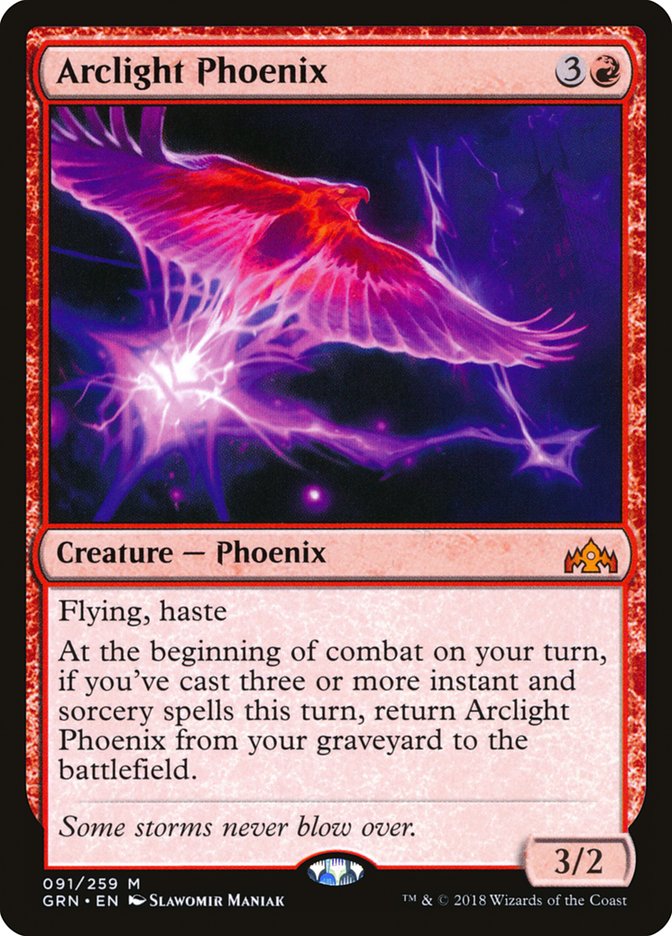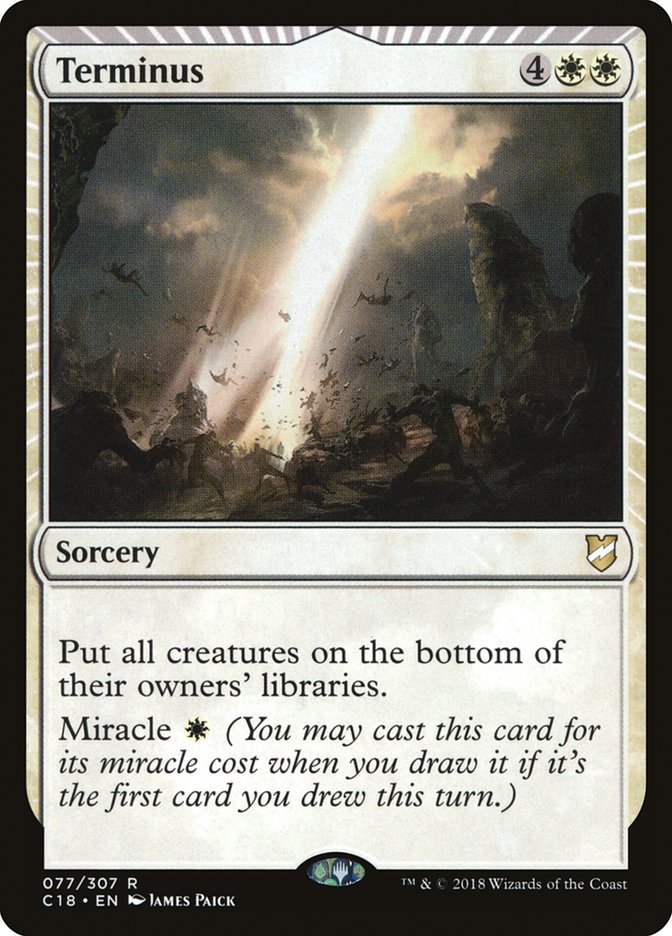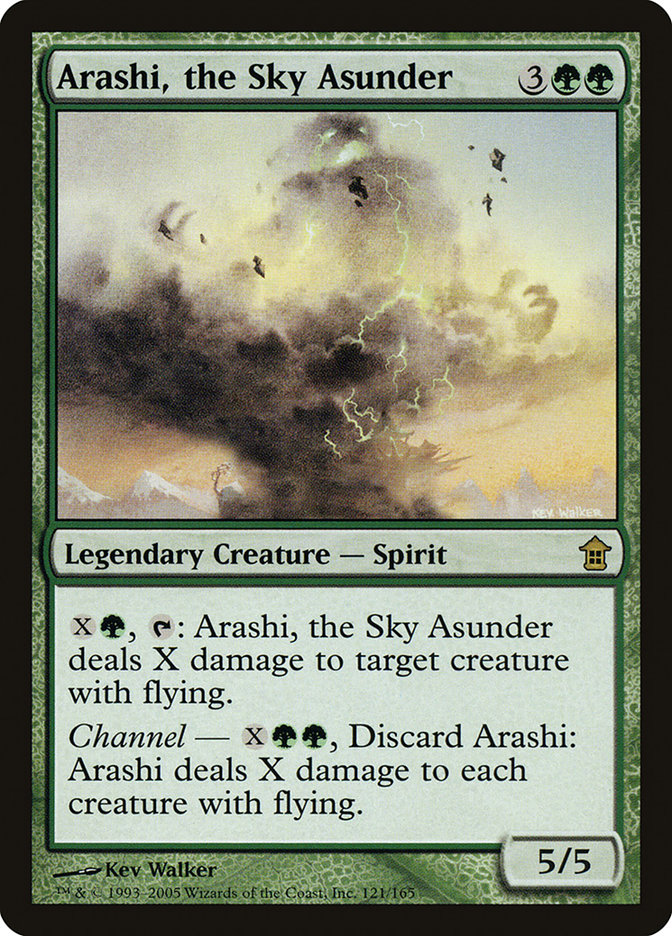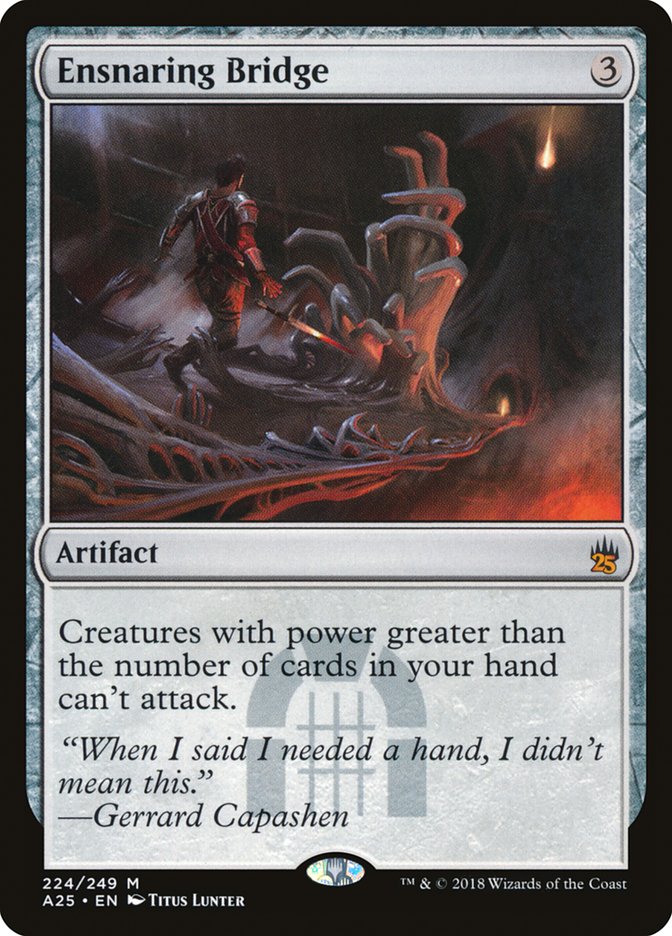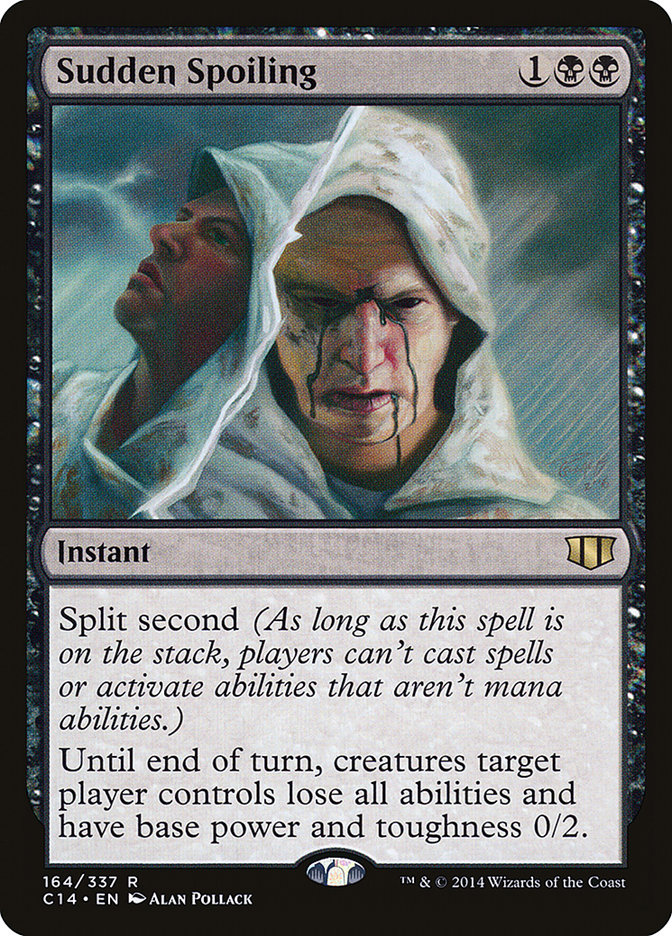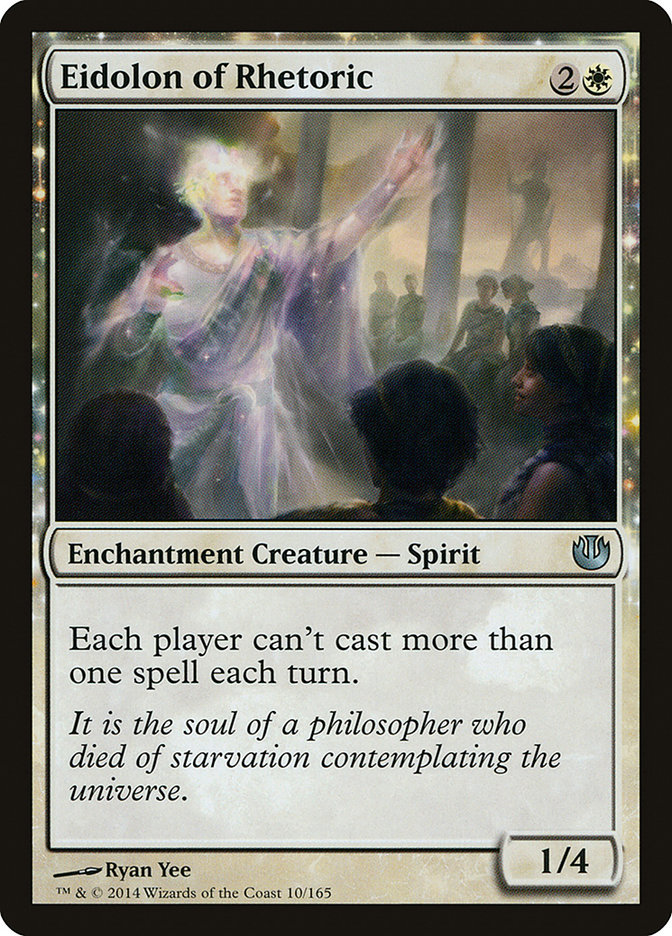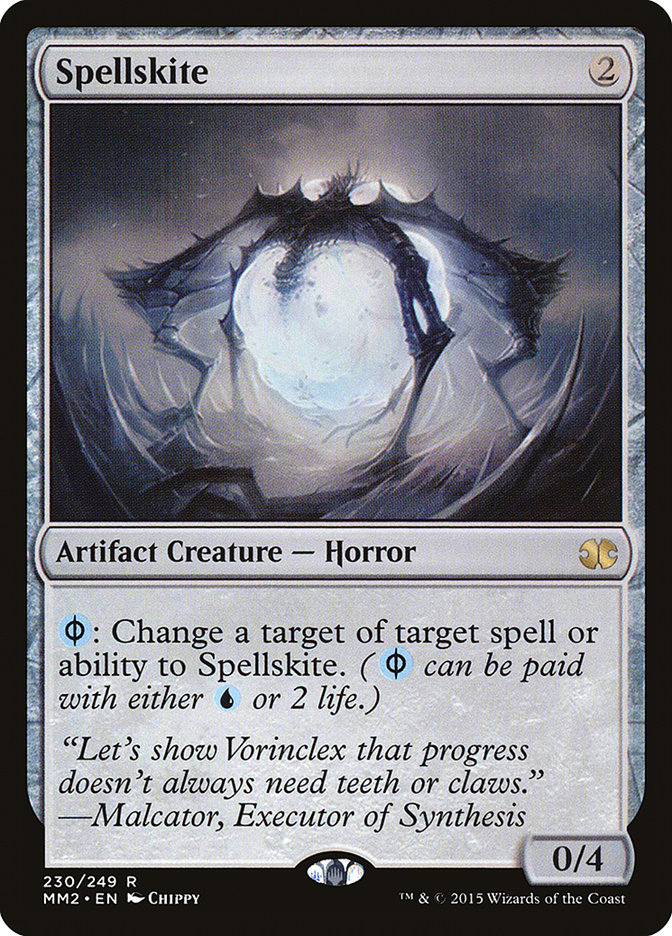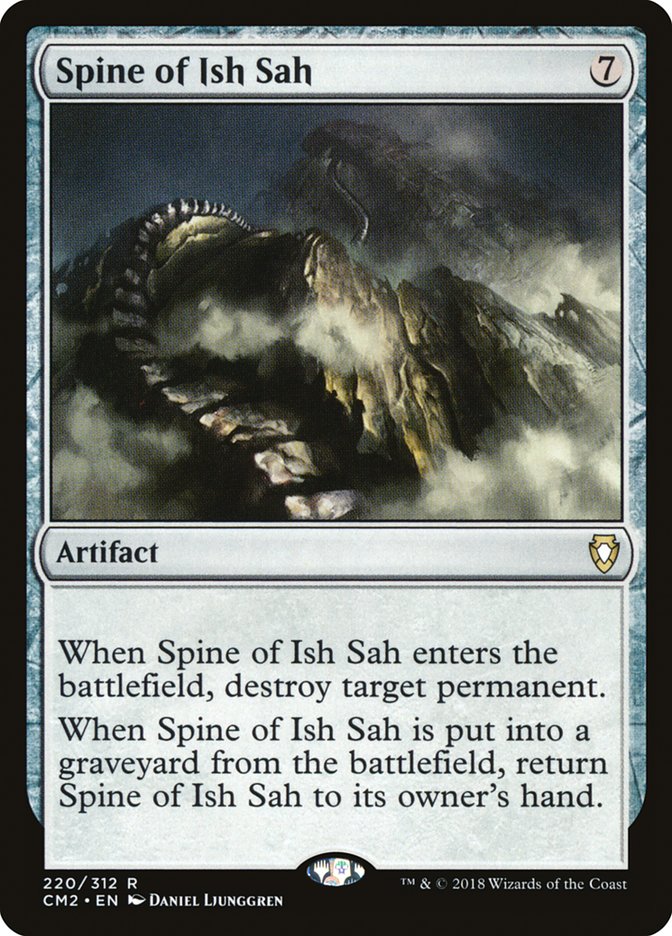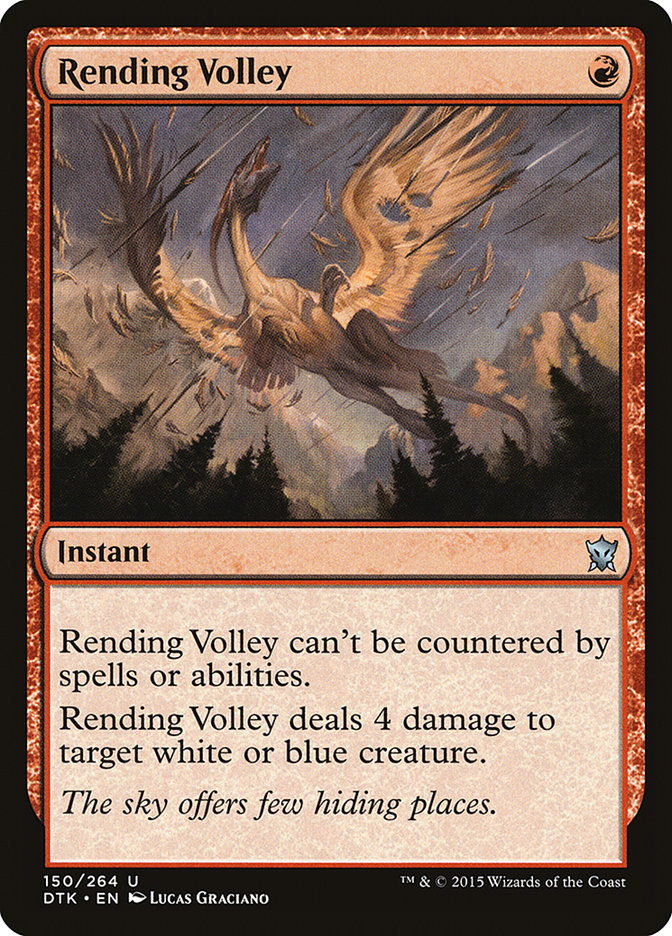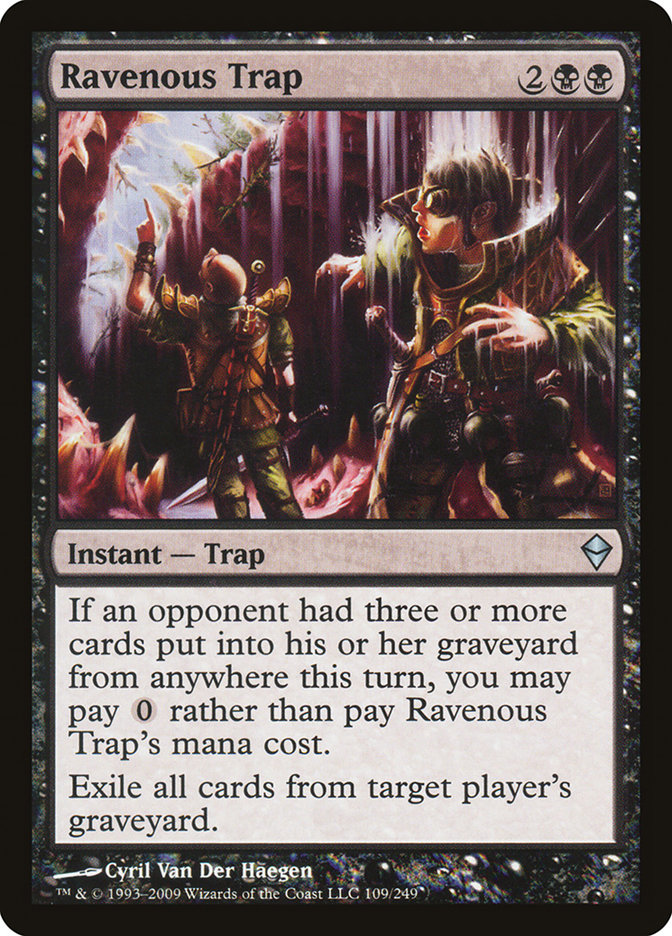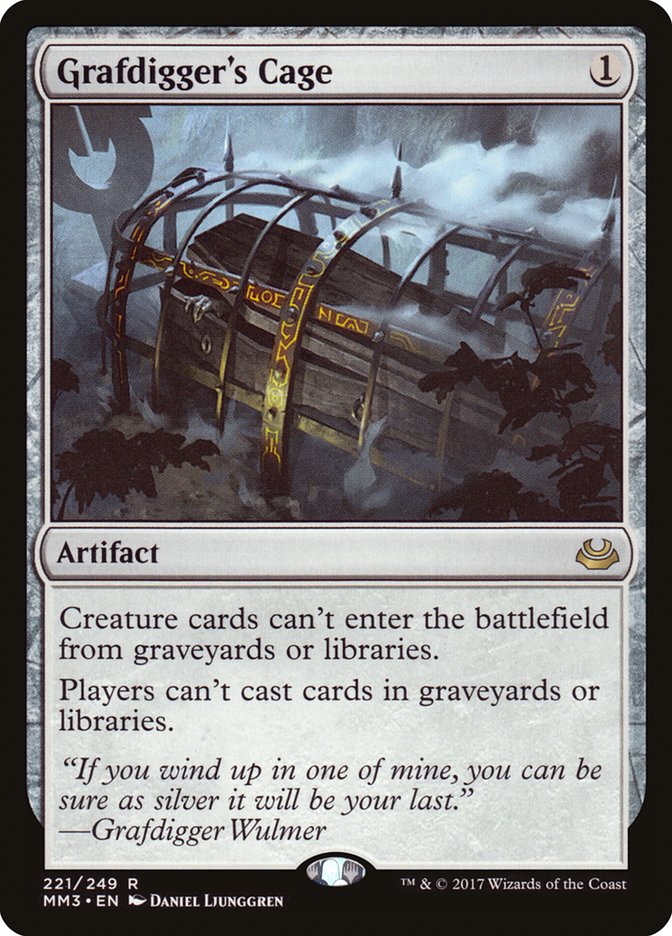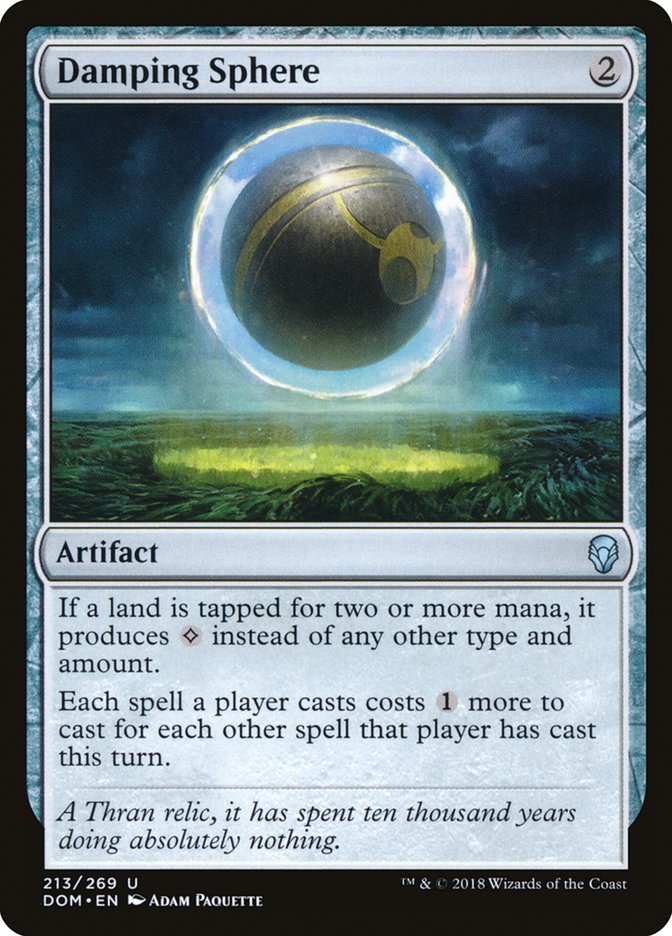My expectation about Modern is that for most people, changing archetypes is
a slow process. It might be more accurate that most people have 2-5 decks
they own and are comfortable playing and choose which one based on how
they’re feeling or what they expect. In general, this means people adjust
to changes in the Modern metagame slowly, which is actually appropriate,
because the Modern metagame correspondingly changes slowly.
For most people, the last week before a tournament is likely a matter of
changing your last few cards – the things you view as flex slots in your
maindeck and sideboard, rather than a scramble to decide what to play the
way teams are used to in the days leading up to a Pro Tour.
My more specific expectation about #SCGINVI is that people will be
relatively flexible, fast to adapt to new strategies, and extremely aware
of the results of #SCGBALT, as well as most articles on this site, like
this one. This means that if you’re preparing to play Modern at SCG CON
Winter, you should expect Arclight Phoenix’s presence to be more impactful
for the format as a whole than if you’re playing anywhere else (except
maybe Magic Online, where things also change very fast). That means both
more Arclight Phoenix players, and, appropriately, more hate for Arclight
Phoenix. It’s interesting to me that all the incentives just happen to line
up appropriately naturally in this regard, so there’s not really much you
need to do to account for it, at least that’s my first impression.
Anyway, with the tournament coming right up, my expectation is that most
readers already know what they’re playing, so I could make a case for
whatever deck or set of decks I might think is well-positioned, but for the
most part, there’s not much you would realistically do with that
information. Instead, I’m assuming you know what you want to play, but
you’re wondering what kinds of tweaks to make. So, my plan is to look at
the decks you’re most likely to be considering and suggest which cards you
might want to include some additional copies of to prepare for the other
decks a lot of people are likely to be bringing this weekend.
So, starting with the setup, my expectation is that the following are the
decks that could show up in numbers exceeding 5% of the field, in
approximate order of how popular I expect them to be:
- Bant Spirits
- Mono-Green Tron
- Izzet Phoenix
- Mono-Red Phoenix
- Infect
- Ironworks
- Hardened Scales
- Humans
- Hollow One
- Jeskai Control
- Dredge
Now, let’s talk about the best ways to beat each of these.
Creatures (28)
- 4 Noble Hierarch
- 2 Phantasmal Image
- 2 Geist of Saint Traft
- 4 Drogskol Captain
- 1 Rattlechains
- 4 Spell Queller
- 3 Selfless Spirit
- 4 Mausoleum Wanderer
- 4 Supreme Phantom
Lands (21)
Spells (11)

It’d be bold to predict that Bant Spirits won’t be the most played deck in
any given large Modern tournament, as it’s been very popular and successful
consistently for a while now. If you haven’t yet, you need to acknowledge
this as the default fair creature deck that plays as something of an heir
to Merfolk, Humans, and Collected Company decks with elements of all of
them and a large metagame share.
Lightning Bolt and Lightning Helix are perfect since all the Spirits have
three toughness or less and they’re relying on each other staying on the
battlefield. Unfortunately, this advice is hard to act on, because those
are precisely the worst removal spells against Izzet Phoenix, where you
want cards like Fatal Push that can kill Thing in the Ice or Path to
Exile/Condemn that answer Arclight Phoenix and Crackling Drake. Because of
this, the rise of Arclight Phoenix is actually good news for Spirits.
Terminus is also great. You want a sweeper in theory, but Spell Queller and
Selfless Spirit make it hard to meaningfully resolve one. Terminus gets
around both of those. Hallowed Burial would also work, but it’s hard to
choose to play a five-mana sweeper.
You can also use flying against them, especially if you’re playing
creatures that don’t fly by playing one-sided sweepers like Firespout,
Corrosive Gale, and–here’s a spicy bit of instant speed, uncounterable
tech–Arashi, the Sky Asunder. It gets around Mausoleum Wanderer and Spell
Queller (but not Selfless Spirit), and you can do it after they tap out for
Collected Company. As an added bonus, if you just cast it, it’s kind of a
nightmare for them if they don’t have a Path to Exile ready. Additionally,
Summoner’s Pact can grab it if you’re playing Amulet Titan. And the best
part? It’s even a Spirit! Is this good tech for the mirror? I honestly have
no idea!
As for other options, you can always take advantage of the fact that
they’re a minimally interactive creature deck that wins though combat. This
means they’re vulnerable to cards like Worship and Ensnaring Bridge.
Another fringe card that would work really well out of only exactly the
right deck is Sudden Spoiling. If you’re playing a black creature deck and
your games play out in such a way that both of you have multiple creatures
on the battlefield, they’ll definitely attack into you at some point, and
Sudden Spoiling would definitely result in them losing roughly as many
creatures as you have available to block. None of their tricks can do
anything about it short of flashing in both Rattlechains and Selfless
Spirit after you cast it.
Creatures (8)
Planeswalkers (6)
Lands (19)
Spells (27)

Mono-Green Tron is likely approximately the next most played deck, but it’s
been here for years. If you don’t know how to adjust your deck if you want
to beat Tron at this point, well, I doubt you’re suddenly trying to figure
out how to now. As always, attacking their mana is the easiest option, and
Damping Sphere’s a good way to do that. Unmoored Ego is another new card
that works well in this matchup. The important thing to remember here is
that they have enough lands and enough power in their deck that it doesn’t
matter how much you slow them down if you’re not actually killing them. You
need to stop their explosive draws, but you also need to remember to
prioritize ending the game.
Creatures (13)
Lands (18)
Spells (29)

Izzet Phoenix is the big new change to adjust to. The best ways to interact
with Izzet Phoenix are Surgical Extraction, Grafdigger’s Cage, Ghostly
Prison, and Damping Sphere or other similar effects like Rule of Law,
Eidolon of Rhetoric, Eidolon of the Great Revel, Ethersworn Canonist,
Thalia, Guardian of Thraben, and Thorn of Amethyst. Eidolon of Rhetoric is
particularly noteworthy, since it makes transforming Thing in the Ice truly
glacial and can’t be killed by Lightning Bolt.
If I were playing Izzet Phoenix, I’d hate to play against a Spirits player
who had Eidolon of Rhetoric and Reflector Mage for my Thing in the Ice. I
wouldn’t really be any happier if the same thing happened out of a Humans
deck.
The big adjustment needed to combat this deck is what I alluded to earlier:
that you need to make sure your removal spells line up properly with their
threats. Recently, Lightning Bolt has been the go-to removal spell in the
format because it lines up really well against Humans and Spirits, and
Hollow One kind of punished Fatal Push anyway, but now you need to be able
to kill Thing in the Ice. Fatal Push, Path to Exile, and if you’re playing
red, maybe it’s time to consider going back to Flame Slash in some numbers.
Rending Volley is another great option that’s good against Humans, Spirits,
Thing in the Ice, and Crackling Drake.
Creatures (14)
Lands (20)
Spells (26)

Infect has seen a resurgence lately. Everyone seemed to give up on it the
moment Gitaxian Probe was banned, which seemed like a bit of an
overreaction, and now people are seeing that it’s still a real deck. There
was a time when Spellskite was roughly the most played sideboard card in
Modern, but we see very few of them these days, which is good news for
Infect players, and the fact that Blossoming Defense can’t target opposing
Spellskites also lowers Spellskite’s stock and generally helps Infect.
That said, if you’re looking to improve your Infect matchup, Spellskite is
a great starting point for any deck. You can never go wrong with more cheap
removal, especially removal that’s particularly good against multiple small
creatures like Izzet Staticaster, Liliana, the Last Hope, Zealous
Persecution, Electrickery, or Night of Souls’ Betrayal.
Eidolon of Rhetoric is another overlooked good option here, since it means
that anytime they try to pump a creature, if you kill it in response,
there’s nothing they can do.
Creatures (6)
Lands (18)
Spells (36)
- 4 Krark-Clan Ironworks
- 1 Pyrite Spellbomb
- 3 Chromatic Sphere
- 4 Mind Stone
- 3 Engineered Explosives
- 4 Terrarion
- 4 Chromatic Star
- 4 Ancient Stirrings
- 4 Mox Opal
- 1 Spine of Ish Sah
- 4 Ichor Wellspring
Sideboard

Ironworks is a deck that has a very precise decklist, where everyone who
plays it plays almost exactly the same cards. That said, there have been
some relatively recent changes. The most important one to know about is the
maindeck inclusion of Spine of Ish Sah. This adds another kind of tool to
their arsenal – they can now destroy any permanent even if you have Stony
Silence or Pithing Needle on Engineered Explosives, and as long as they can
sacrifice it to Krark-Clan Ironworks or Sai, Master Thopterist, they can
keep it coming back to kill more things.
If they have Krark-Clan Ironworks and Scrap Trawler, it’s very easy for
them to cast Spine of Ish Sah a large or infinite number of times. This
means that any plan that relies on turtling up against them in some way is
much less likely to be effective than it used to be (and those plans were
never especially good). Don’t expect a hate card like Damping Sphere or
Eidolon of Rhetoric to end the game. It will slow them down, but you still
need to assemble a clock that can reasonably end the game by turn 5 or so,
or you should expect that fairly often they’ll just power through whatever
resistance you’ve put down, and, of course, you need to make sure you’re
not losing to Sai, Master Thopterist.
This means that disruptive measures that don’t require staying on the
battlefield should be prioritized over those that do. Unmoored Ego and
similar cards are much stronger than other cards that may look more
effective, like Stony Silence, that the Ironworks player can more easily
answer.
Prison type cards should be viewed as disruption rather than a lock, so
they can still function very well out of an aggressive deck.
Artifact removal is good, but not great. Overloading on it can lose you
games. Again, it’s nice to be able to slow them down, but not at the cost
of your own clock. If your plan involves bringing in removal, if your
opening hand is just lands and removal and you’re playing a deck that’s
generally aggressive, don’t keep your hand just because all your cards are
theoretically good against them. You’ll lose if you haven’t established a
clock.
Creatures (20)
Lands (20)
Spells (20)
- 3 Welding Jar
- 1 Mishra's Bauble
- 4 Ancient Stirrings
- 4 Mox Opal
- 1 Throne of Geth
- 4 Hardened Scales
- 3 Animation Module
Sideboard

Has there ever been a more perfect place for Wear//Tear? Pithing Needle,
Stony Silence, and Suppression Field all work pretty well here, but the
deck is designed to at least be able to continue casting spells and
attacking with potentially large creatures through Stony Silence. For the
most part, this is a creature deck, and things that are good against
creature decks are good here – cheap removal, sweepers, and cards like
Reflector Mage and Hostage Taker are all great.
The deck’s primary strengths are the explosiveness of Arcbound Ravager and
Walking Ballista with Hardened Scales. This means that its threats
incidentally answer, outrace, or outmatch most similarly costed threats.
Additionally, Hangarback Walker and cards like Animation Module or
Evolutionary Leap give the deck a little ability to grind, but for the most
part, they’re hoping you interact as little with their key cards as
possible.
Where Ancient Grudge is worse against Ironworks than it is against other
artifact decks, this very much isn’t true of Hardened Scales. Like
Ironworks, you should expect Hardened Scales will have 3-4 Nature’s Claims
to bring in after sideboarding, so you similarly can’t count on lock
pieces, but they’re still going to be great in those matchups.
Creatures (37)
- 4 Meddling Mage
- 4 Noble Hierarch
- 4 Phantasmal Image
- 4 Champion of the Parish
- 3 Thalia, Guardian of Thraben
- 4 Mantis Rider
- 3 Reflector Mage
- 4 Thalia's Lieutenant
- 4 Kitesail Freebooter
- 3 Militia Bugler
Lands (19)
Spells (4)

Beating this deck is like beating Spirits in that you don’t want to let
their synergies get out of control, and Lightning Bolt is exactly the right
kind of card, but it is different in that sweepers are better because they
don’t have Mausoleum Wanderer, Spell Queller, and Selfless Spirit. Instead,
they have Thalia, Guardian of Thraben, Kitesail Freebooter, and Meddling
Mage. This means you ideally want cheap sweepers with different names.
If Humans is on your radar, you might want to play one Engineered
Explosives, one Pyroclasm, one Firespout, one Anger of the Gods, etc.
rather than just playing a lot of one of them. You’d also like some spot
removal to slow them down and answer their important Kitesail Freebooter or
Meddling Mage to combine with your sweepers, although I imagine that you’ll
do alright if you just have a lot of different sweepers.
Humans and Izzet Phoenix are two decks with interesting applications for
each other. Thing in the Ice is fantastic against Humans if it can
transform, but Reflector Mage and Thalia, Guardian of Thraben can make that
difficult. Arclight Phoenix is a great blocker for Mantis Rider, but if
Mantis Rider becomes a 4/4, two are necessary to block and they can’t
usually attack, but getting two to block isn’t that hard to do. Thalia,
Guardian of Thraben seems like the most important card in the matchup, but
Gut Shot is fantastic against it and other Humans, and the Izzet Phoenix
deck has plenty of other removal. This means I suspect that the Izzet deck
is favored, but I could see Eidolon of Rhetoric turning that around really
quickly if the Izzet player isn’t prepared.
Remember what I was saying about Rending Volley? You might want to pack
that in your Izzet Phoenix sideboard for the mirror and anyone who tries to
Eidolon you.
Creatures (24)
- 4 Street Wraith
- 4 Bloodghast
- 3 Gurmag Angler
- 4 Flamewake Phoenix
- 1 Tasigur, the Golden Fang
- 4 Flameblade Adept
- 4 Hollow One
Lands (18)
Spells (18)

Hollow One, like Izzet Phoenix, is one of those “half graveyard decks” –
decks that use the graveyard without entirely relying on it. Rest in Peace
is good against them because it turns off Gurmag Angler, Flamewake Phoenix,
and Bloodghast, but it doesn’t do much about Hollow One or Flameblade
Adept. Hollow One is great at attacking quickly with creatures that want
slightly different kinds of answers to put the opponent in a bit of a bind.
It’s an aggressive deck that’s minimally reactive, and its lategame is
basically just more of its early game but slower. This means that if you
can survive for a few turns, you’re probably in reasonably good shape, and
some decks can outrace it. I don’t have a lot of experience in the matchup,
but I expect this is the sort of deck Hardened Scales is looking to trump
by going just a bit bigger. Selesnya Hexproof also does this, as does
Dredge, essentially.
You don’t want to be playing a deck like Jund that’s trying to interact
directly with your opponent’s threats using cards that need to line up just
right. One can infer, therefore, that you don’t want to sideboard into a
plan that more closely resembles Jund. This means your plan shouldn’t
involving bringing in a bunch of answers for some of their gameplans and
hoping to line things up right. Unfortunately, that means you mostly want
to focus on doing your own thing and hoping it’s good enough, which isn’t
really a reasonable plan if you know your thing isn’t good enough. This is
to say: If you’re already playing Jund, I don’t really know how to fix your
problem. Hollow One is just deck where your overall strategy matters more
than your individual card choices for beating them. I guess that’s to say
that at this point, you shouldn’t really worry about what to do about them
with your last few slots. The deck will probably be under 5% of the field
anyway.
Creatures (15)
Lands (17)
Spells (28)

Depending on what you’re playing, Death’s Shadow might function similarly
against you to Hollow One, Infect, or Izzet Phoenix – it’s a disruptive
deck with large creatures and a reasonable clock. If large creatures are
what matter against you, this deck is similar to Hollow One. If you’re
playing a proactive spell deck, like most combo decks, this deck is going
to function pretty similar to Infect, but with a slightly slower clock and
a little more disruption. For most people, it’s going to be pretty similar
to Izzet Phoenix – an aggressive blue deck with big creatures that require
a little setup to get going, where Lightning Bolt isn’t a great answer.
Removal spells that actually work, like Path to Exile, Condemn, Assassin’s
Trophy, and the like are certainly good here, but honestly, this is mostly
like Hollow One in that I don’t think there are a lot of really high impact
sideboard cards for this matchup because it just isn’t the kind of deck
that’s really exposed to any particular direction of hate. This is another
deck that I wouldn’t recommend paying specific attention to in deck
construction.
Creatures (5)
Planeswalkers (3)
Lands (24)
Spells (28)

Continuing the run of increasingly fair decks, the fairest of them all,
Jeskai Control, is the default control deck at the moment. This should be
reasonable well-positioned against Bant Spirits, Humans, Hardened Scales,
Hollow One, Death’s Shadow, and the like, but I think it’s really leaning
on drawing the right sideboard cards against Tron, Ironworks, and Dredge. A
big question mark for me is Izzet Phoenix. I suspect that it’s considerably
ahead, but I don’t know how far. If I’m right, I’d expect a drop off in
Jeskai Control, especially at SCG CON Winter, and adjust accordingly. That
is to say, I’d again advise not paying much attention to beating this deck
specifically. Which is nice, because, being a fair deck, I think each
sideboard card is relatively low impact anyway.
Creatures (17)
Lands (19)
Spells (24)

Very much the opposite, this is a deck where your sideboard always matters
a ton and how many and which sideboard cards you play is an extremely
pertinent question.
If you want to beat Dredge specifically, for most decks, I believe Ravenous
Trap is the best approach because they can’t do anything about it, but
unfortunately, it’s the worse graveyard hate card against basically every
other graveyard deck.
Surgical Extraction is the best against Arclight Phoenix specifically,
although Grafdigger’s Cage is also great, especially if you’re playing a
deck where they would be unlikely to want to bring in Abrade. Grafdigger’s
Cage is probably better than Surgical Extraction against Dredge, although
to some extent, that depends on how good your matchup against them is. If
your matchup against Dredge is generally pretty good, you want the lower
impact but more reliable card in Surgical Extraction; but if your matchup
is bad and you’re only beating them if a single card can essentially win
the game on its own, you want something like Grafidgger’s Cage that will
steal the game if they don’t find an answer.
As a general rule, if you’re playing white, Rest in Peace is usually the
strongest overall if you don’t mind giving up your own graveyard.
Highlights
This breakdown should give us the tools to reach some conclusions. We know
which decks matter and how to beat them, so the question is how to beat as
many of them as possible with the most overlap. Those are the cards that
will be best positioned this weekend.
Damping Sphere is good against Tron, Izzet Phoeix, and Ironworks, which
probably represents somewhere in the ballpark of 20% of the field, which is
a pretty good size to hit with a single card, especially one that’s high
impact, so I think this is a good time to pack a lot of these in most decks
that aren’t hurt much by it.
Rending Volley is good against Izzet Phoenix, Humans, and Spirits, which is
probably another 20% or so. Fewer decks can use it, but I think the fact
that red decks specifically should be scrambling to find a good answer to
Thing in the Ice makes it worth calling out specifically.
Surgical Extraction is good against Izzet Phoenix, Dredge, Ironworks, and
Tron sometimes – it really depends on how good you are at getting their
important cards in the graveyard before they can resolve them. If it’s good
against Tron for your deck, you probably want it against over 20% of the
field and it becomes specifically worth giving extra consideration to.
Eidolon of Rhetoric is a powerful sideboard card that’s probably down in
popularity because Storm hasn’t been especially popular, but I think it
warrants a second look as Phoenix hate. It’s good against Phoenix, Infect,
and Ironworks, which are collectively probably a little under 20% of the
field, but I think it’s really high impact when it’s good, and definitely
worth special consideration, especially if you’re playing Collected
Company.


